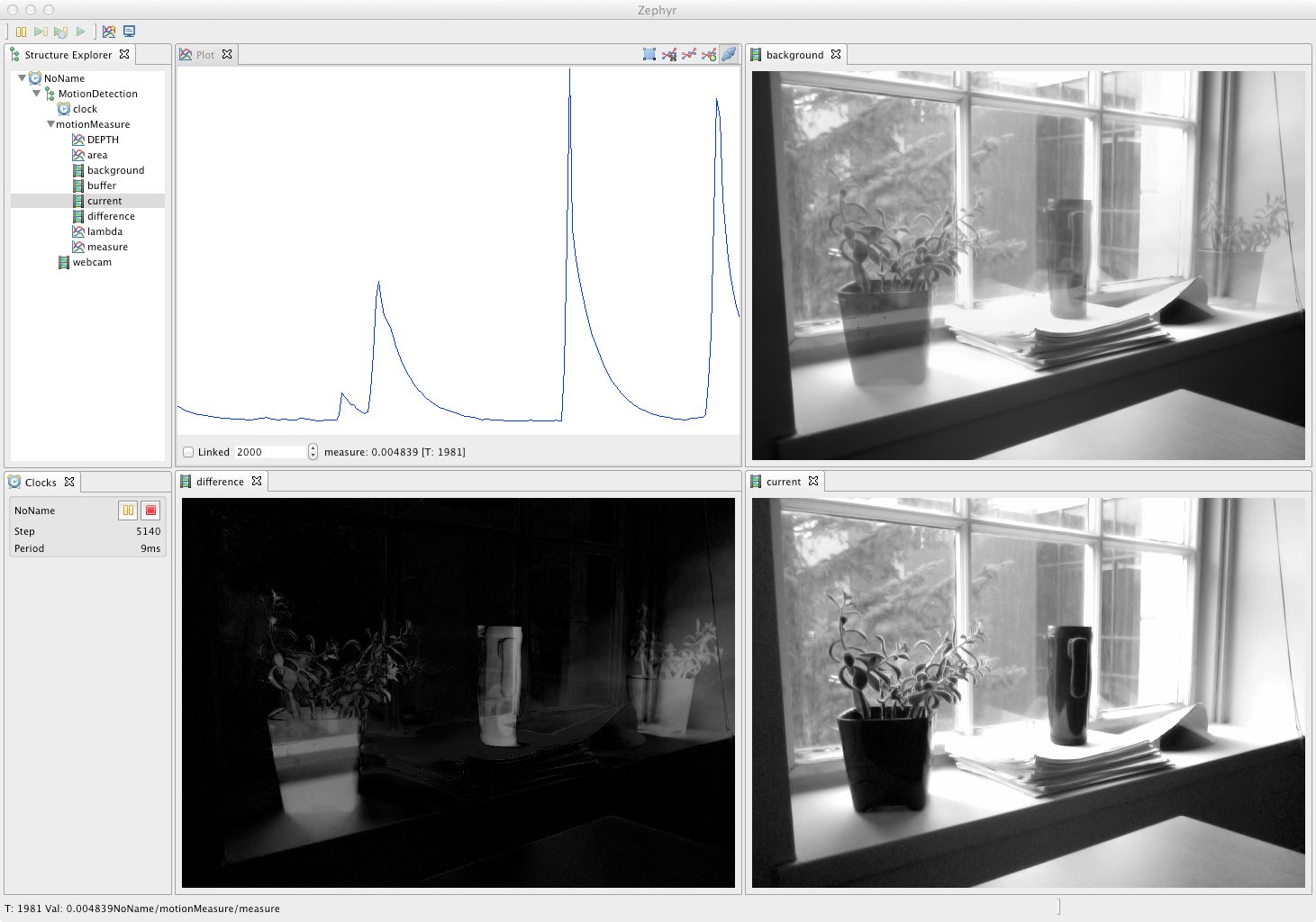Section: Software and Platforms
Visualization Tools
Zephyr - Realtime Visualization in JAVA
Participant : Thomas Degris [correspondant] .
Zephyr is a software to visualize numeric variables and data structure in real time and at different time scale. Zephyr is practical because it requires only minimal changes in the code: it uses Java reflexivity to automatically detect variables in the code to monitor and data structure with an associated dedicated view. Zephyr can easily be extended with new plugins because it is based on the popular Eclipse Rich Client Platform. Consequently, Zephyr takes advantage of an already existing and fully operational Eclipse plugins for many of its functionalities. Finally, Zephyr is distributed with a Java python virtual machine named Jython and a lisp implementation named Clojure. An example of a Zephyr screen is shown in Figure 14 .
Zephyr was started in fall 2009 in the RLAI group at the university of Alberta (Canada) when Thomas Degris was a postdoc in this group. Zephyr is still actively used by RLAI. Users include Adam White, Joseph Modayil and Patrick Pilarski from the University of Alberta. Zephyr has been registered on the Eclipse marketplace since October 2011. Documentation about Zephyr is included on its website: http://zephyrplugins.github.com . Zephyr is licensed under the open source Eclipse Public License.
Experimental Setups for User Study of Alignment in Asymmetric Interactions
Participants : Jonathan Grizou [correspondant] , Chloé Rozenbaum, Manuel Lopes, Katharina Rohlfing, Pierre-Yves Oudeyer.
|
This platform has been developed to investigate alignement in asymmetric interactions. We consider a remote construction task, where one user (user A) knows what to build but do not have access to the construction site while its partner (user B) is at the site but do not know what to do. By constraining the communicative channel between the two partners, we study how, and if, they will agree on a similar set of signals to convey information and what type of information they tend to produce.
The experimental setup consist of box with button, a video recording system and two screens. User A can send signals to user B by pressing buttons (fig. 15 ). Signals are displayed on a screen (fig. 15 ) at user B side. User A is not aware of what is displayed on user B screen, neither user B is aware of the relation between button presses and screen events. The video of user B construction scene is streamed to a screen at user B side.
The task consist of bulding arbitrary construction (fig. 15 ) using colored toy bricks (fig. 15 ).








